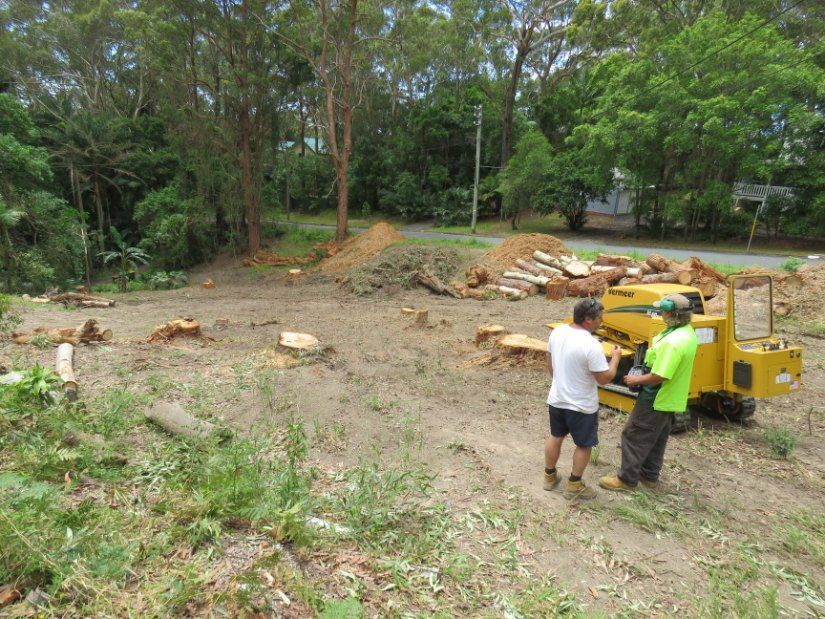Land Clearing in Lansdowne
- 35+ Years' Experience
- Fully Insured Service
- On-Site Consultations
Request a Callback in Lansdowne
Thank you for contacting Jeff Pearce Tree Services.
We will be in touch soon.
Oops, there was an error sending your message.
Please try again later.
Lansdowne Land Clearing
When you’re planning a new project or need to reclaim overgrown land, having a reliable clearing team makes all the difference. At Jeff Pearce Tree Services, we’ve been helping property owners across Lansdowne and surrounding areas with safe, efficient land clearing for more than 35 years. Our services focus on removing trees, stumps, and thick vegetation to create open, usable spaces that are ready for whatever comes next. Whether you’re preparing for a build, improving fire safety, or clearing a block that’s been left unmanaged, we bring the experience, tools, and attention to detail needed to get the job done properly. We offer on-site consultations, practical advice, and fully insured service, so you can move forward with confidence. Every job is approached with care for your property and a clear plan tailored to your goals.
To book trusted tree clearing in Lansdowne, call Jeff Pearce Tree Services today on 0418 448 313.
Safe, Efficient Tree Clearing Services
Tree clearing is a big job, but we’re here to make it simple. Our team removes trees, stumps, shrubs, weeds, and general vegetation to give you a clean, usable space for whatever’s next. We clear properties for new builds, rural setups, and fire safety, using careful, proven methods that protect surrounding areas and prevent unnecessary damage. We also assist with noxious weed removal and fire hazard reduction to help keep your property safe long after the clearing is done.
Every job is carried out with a focus on safety, precision, and long-term results. We take the time to understand what you need, work to your timeframe, and make sure the site is left neat, tidy, and ready for the next phase of your project.
How is tree clearing priced—per acre or per hour?
Tree clearing in Lansdowne can be priced either per acre or per hour, depending on the size, complexity, and conditions of the project. For straightforward clearing on open rural land, many contractors prefer to quote per acre, with prices varying based on vegetation density and terrain difficulty. However, for smaller blocks, selective clearing, or jobs requiring careful work around obstacles like buildings or waterways, pricing is often calculated on an hourly basis. Hourly rates account for variables such as the need for specialised equipment, access limitations, and unexpected challenges uncovered during clearing. To avoid surprises, it’s best to request a detailed written quote based on an on-site inspection that factors in the property’s specific needs and any additional services like mulching or debris removal.
What is hazard reduction clearing?
Hazard reduction clearing is the targeted removal of vegetation to lower the risk of bushfires and protect property and lives. In areas like Lansdowne, which can experience high fire danger during the warmer months, hazard reduction involves clearing undergrowth, deadwood, dense shrubs, and flammable debris near homes, fences, and structures. The goal is to create defensible space, which provides a buffer zone where fire intensity is reduced and firefighting efforts are more effective. Hazard reduction may also include pruning tree branches away from roofs and clearing vegetation along access roads. Some clearing can be done under the NSW 10/50 Vegetation Clearing Scheme without council approval, but larger-scale work often requires compliance with local fire management plans and environmental regulations.
Can tree clearing reduce bushfire risk?
Yes, clearing trees and dense vegetation can significantly reduce bushfire risk, especially in high-risk zones. Removing flammable materials like dry branches, dead trees, and undergrowth helps create defensible space around homes, sheds, and other structures. It also allows for better emergency access and reduces the chance of fire spreading quickly across a property. Fire hazard reduction clearing may be recommended or required by local fire authorities, and specific guidelines often apply, including minimum clearance distances and preferred species retention.






